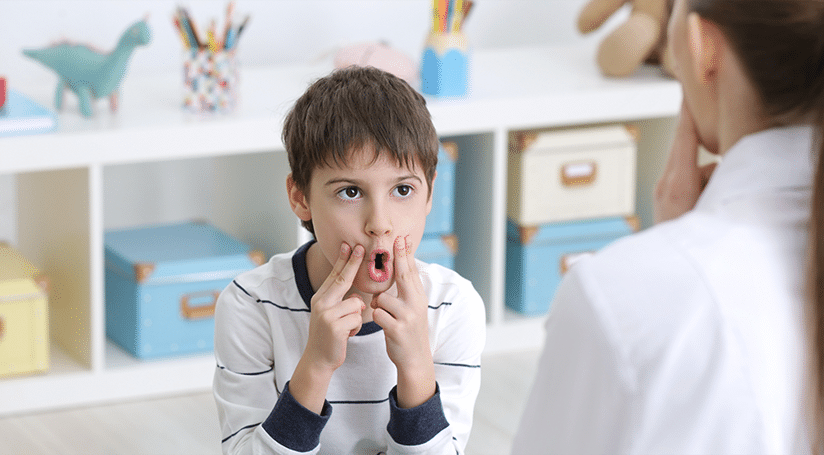
Attention deficit hyperactivity disorder (ADHD) is one of the most common childhood brain disorders and can continue through a child’s adolescence and adulthood. Inattention, hyperactivity and impulsivity are the key behaviours of ADHD (National Institute of Mental Health, 2012).
| Key Behaviours: | Symptoms: |
| Inattention |
|
| Hyperactivity & Impulsivity |
|
Although typically developing children may display this behaviours as well, these symptoms are often more severe for children with ADHD.
School-Home Behavioural Intervention for ADHD
Children with ADHD are mostly treated with, or a combination of medication and behavioural intervention strategies. Recent research has further validated the effectiveness of behavioural intevention for ADHD as well.
A study conducted based on a newly developed collaborative school-home behavioural intervention has shown positive impact of behavioural intervention on ADHD symptoms and performance deficits.
So How is School-Home Behavioural Intervention Conducted in This Study?
1) 2-3 target behaviours of the child (e.g. academic work, classroom deportment, and social interactions) are identified and will be rated up to three times per day.
2) Reward-based management program implemented to manage child behaviour, encourage active group participation, and reinforce skills.
- Stars earned for meeting target goals are exchanged for rewards
3) 40-min group sessions targetted towards the child’s social functioning and independence are implemented during the school day.
- Skills are taught through didactic instruction (teacher delivers and student receives lesson), behaviour rehearsal, and in vivo practice (carried out in child’s natural setting).
4) Target behaviours will be refined through the intervention period as well as during the meetings (attended by teacher, parent, student, and learning support professional).
Child’s Learning
So what do the children really gain from the behavioural intervention for ADHD? The goals of the intervention would be to target (1) social functioning and (2) independence
1) Social Functioning
- Good sportsmanship
- Accepting consequences
- Dealing with teasing
- Problem solving
- Self-control
- Friendship making
(2) Independence
- Homework skills
- Completing chores and tasks
- Establishing and following routines
Parents Play a Crucial Role
Other than the delivery of interventions by the learning support professions (LSPs), the study too, emphasize on the importance of having an active partnership of parents, with the teachers and professionals. For e.g. parents reward behaviours that occur at home and school as well. This ensures that reinforcements are implemented across settings and maximizes the intervention impact and generalization.
Valuable Ways in Which Parents Can Contribute:
1) Reinforce the same set of skills/behaviours that are reinforced in school as well.
2) Attend parents-therapist feedback/training sessions.
3) Learn strategies to promote your child’s engagement, motivation, and self-control.
Throughout the implementation of school-home behavioural interventions, parents are introduced to effective use of commands, rewards, discipline, and strategies for managing areas of difficulty that are associated with ADHD. The delivery of the program is coordinated such that the parents play an active role, and are trained in the aspects of the intervention as well.
Therefore, this shows that parents play a very crucial role in determining the effective of the behavioural intervention for their child.
References:
- American Psychiatric Association (2000). Diagnostic and Statistical Manual of Mental Disorders (4th ed.). Washington,DC: American Psychiatric Association.
- Centers for Disease Control and Prevention.(2013). Attention-deficit/hyperactivity disorder. (adhd). Retrieved from http://www.cdc.gov/ncbddd/adhd/diagnosis.html
- Centers for Disease Control and Prevention.(2013). Treatment. Retrieved from http://www.cdc.gov/ncbddd/adhd/treatment.html
- Fabiano,G. A.,Vujnovic,R. K, Pelham,W. E.,Waschbusch,D. A., Massetti, G. M., Pariseau, M. E., Volker, M. (2010). Enhancing the effectiveness of special education programming for children with attention deficit hyperactivity disorder using a daily report card.School Psychology Review, 39, 219-239.
- Kaiser, N., McBurnett, K., Pfiffner, Rooney, M., L. J., & Villodas, M. (2013).
- Educational outcomes of a collaborative school-home behavioral intervention for adhd. American Psychological Associasion, 28(1), 25- 36. doi:10.1037/spq0000016
- National Institute of Mental Health. (2012).Attention deficit hyperactivity disorder. Retrieved from http://www.nimh.nih.gov/health/publica tions/attention-deficit-hyperactivity-disorder/index.shtml
- Pfiffner, L. J., Kaiser, N. M., Burner, C., Zalecki, C., Rooney, M., Setty, P., & McBurnett, K. (2011). From clinic to school: Translating a collaborative school home behavioural intervention for ADHD. School Mental Health, 3,127-142.





